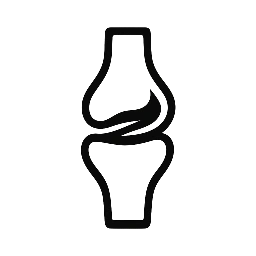This is Part 2 of our comprehensive series on UCL injuries. You can read Part 1, an essential guide to the UCL, here.
When an athlete is diagnosed with a tear of the ulnar collateral ligament (UCL), the first question is often: “Do I need surgery?” The answer is, not always. For cases of stretching (Grade 1) or partial tears (Grade 2), the body can often heal naturally with a structured, conservative treatment plan. Understanding the nature of the injury is crucial; for instance, a Grade 1 injury might involve slight stretching of the ligament, while a Grade 2 injury could mean a partial tear. Both conditions have different implications for treatment and recovery. Therefore, an accurate diagnosis should be made by a qualified medical professional through physical examination and potentially imaging studies such as MRI.

The Foundations of Non-Surgical Treatment
The Foundations of Non-Surgical Treatment
The goal of conservative treatment is to reduce inflammation, protect the ligament from further stress, and strengthen the surrounding muscles so they can better support the joint. This typically includes a series of steps that must be adhered to strictly to allow proper healing. For example:
- Complete Rest: Stopping all throwing or painful activities is the first and most critical step.
- Ice and Anti-inflammatory Medication: To manage pain and reduce swelling in the initial phase.
- Physical Therapy: A carefully designed physical therapy program is essential. It focuses on strengthening the muscles around the ligament, especially those in the shoulder, core, legs, and forearm, to take stress off the healing UCL.
- Splints or Braces: To protect the elbow and prevent movements that could re-injure the ligament during the early stages of recovery.

A Modern Option: Platelet-Rich Plasma (PRP) Injections
For partial tears, Platelet-Rich Plasma (PRP) has emerged as a popular biological treatment to stimulate and accelerate the body’s natural healing process. This innovative therapy utilizes the body’s own healing mechanisms, enhancing the recovery process.
The procedure is simple: blood is drawn from the patient, processed in a centrifuge to concentrate the platelets (which are rich in growth factors), and then this concentrated plasma is injected precisely at the site of the ligament injury. This injection can kickstart the healing process and has been found to be effective in younger athletes whose bodies are responsive to such treatments.
The procedure is simple: blood is drawn from the patient, processed in a centrifuge to concentrate the platelets (which are rich in growth factors), and then this concentrated plasma is injected precisely at the site of the ligament injury.
Benefits of PRP:
PRP therapy has several advantages, making it an appealing option for athletes dealing with partial UCL tears:
- It has shown high success rates for healing partial tears.
- It can significantly reduce recovery time when combined with a proper physical therapy regimen.
Limitations of PRP:
Despite its benefits, PRP is not without limitations:
- It does not heal complete tears (Grade 3).
- If it fails, it may delay a necessary surgery, which can be a concern for athletes with a limited competitive timeline.
Therefore, the decision to use PRP must be chosen carefully after a thorough evaluation by a sports medicine specialist, taking into account the patient’s specific condition and athletic goals. Personalized treatment plans are essential for optimal recovery.

In our next article, we will discuss the famous “Tommy John Surgery” for cases where surgical reconstruction is the only solution.
Exploring Other Non-Surgical Treatments
Apart from PRP, there are other non-surgical treatments that can be beneficial for UCL injuries. These include:
- Hydrotherapy: Utilizing water resistance to strengthen muscles without putting stress on the elbow. This method can be advantageous in the early stages of rehabilitation.
- Ultrasound Therapy: This uses sound waves to promote tissue healing and can be integrated into physical therapy sessions.
- Massage Therapy: Specialized massage techniques can help improve blood circulation and reduce muscle tension around the elbow joint, facilitating a better recovery environment.
- Activity Modification: Implementing changes in technique or equipment used in throwing sports to decrease the strain on the UCL. Coaches and trainers can assist in this process to ensure athletes maintain performance while protecting their elbows.
Conclusion
In conclusion, non-surgical options for UCL injuries provide a viable pathway for recovery, especially for partial tears. With advancements in treatments like PRP and a robust physical therapy program, athletes can often return to their sport without the need for invasive procedures. It’s crucial to work closely with sports medicine professionals to develop a tailored treatment strategy that considers the athlete’s condition, goals, and timeline for return to play. Knowledge of treatment options empowers athletes to make informed decisions about their health and career.

Leave a Reply